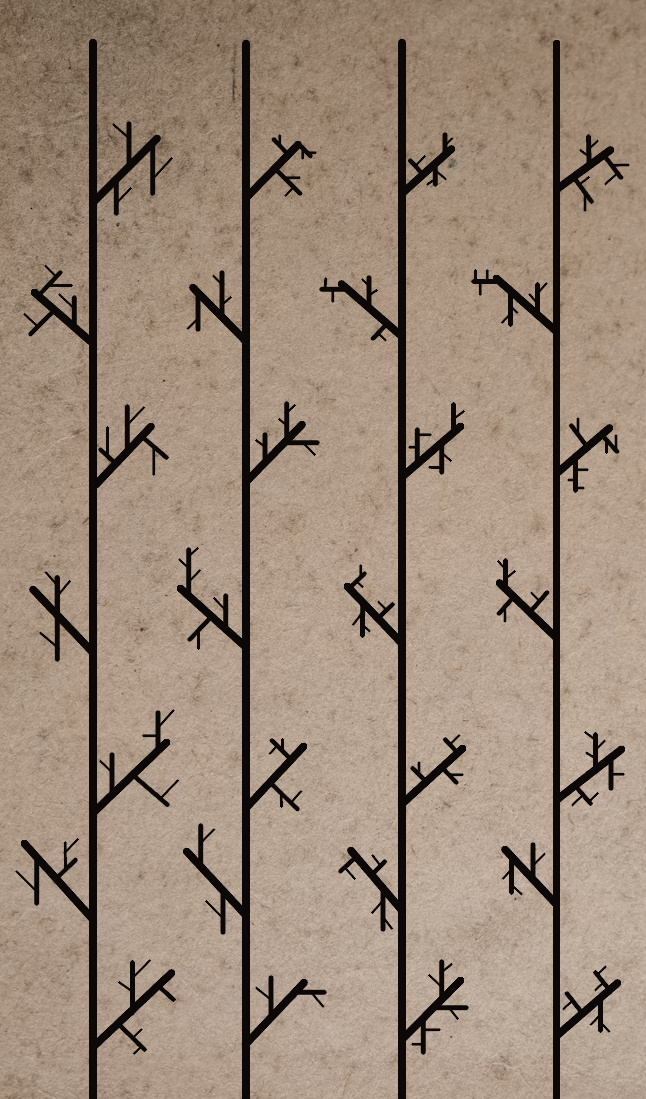Mùzì (Moo-tse)
Overview
Description
The Written word of The Tianese language, it takes the shape of a logographic script resembling a tree. The separate branch-like logograms sprouting along a central "trunk", each one representing a unique idea. Originally developed by The Tianese as a way to categorize and explain the natural world around them, many of the original symbols bore a close resemblance to their conceptual counterparts before being further simplified by time-saving scribes over the course of millennia.
As it now stands, very few if any of the modern symbols retain any elements whatsoever of their prototypical form; the focus having since shifted into ease of both writing and legibility. The idea being more attached to the specific "growth order" of a logogram rather than any particular visual resemblance.
Growth Order
Fundamental to the understanding of Mùzì is the idea of growth order, that is to say: "A tree does not stand on its crown" and neither should a person's writing. The main tenet is "from trunk to tip" and should any pupil be found to be disobedient during their studies then discipline will be administered until the problem has corrected itself. This is not done out of malice, as the growth order helps to maintain consistency with a script that could get very messy very quickly otherwise. It also helps to serve as a mnemonic device, instead of rotely memorizing the thousands of individual characters by paying close attention to the structure and "flow" of a branch an individual's reading speed and comprehension will be boosted considerably.
Medium
Generally there are two preferred mediums through which Mùzì is realised, the first being written on the chartaceous bark of a tree native only to The Great Forest. It's round, broad trunk and stout stature proving most useful when it comes to harvesting the dead outer layers, often considered a sign of pride if completed in one go. The second, more monumental, and more interesting method is that of physically growing the characters themselves; carefully guiding the new shoots of trees or shrubs and trimming the excess such that they begin to take on the desired form. Grown anywhere on the scale from simple signposts pointing towards a settlement to entire vast forests known as The Written Woods. These verdant ancestral epics describe inspiring tales of heroism and virtue alongside the collective wisdom of a thousand generations of great philosophers, ensuring that the people never lose their connection to their past.
Superstitions and Beliefs
Because of the nature of the script its readers occasionally stumble upon a character, sometimes even multiple, embedded within the natural world all on its own; as if it's a very message from the heavens themselves. Numerous superstitions and beliefs have subsequently arisen from this, for example, any tree or plant with a branch even remotely resembling the character for "death" is to be avoided at all costs. Consequently should that branch instead resemble the character for "health" or "life" then it's lucky and many Tianese households will deliberately grow ornamental plants with that shape in the hopes that it will bring good fortune to their family.




I love the esthetically pleasing and unique look of the script! I'd love to see more details in how the glyphs are structured and how they encode the language. Does the principle of growth order also play in the word order of Tianese somehow?